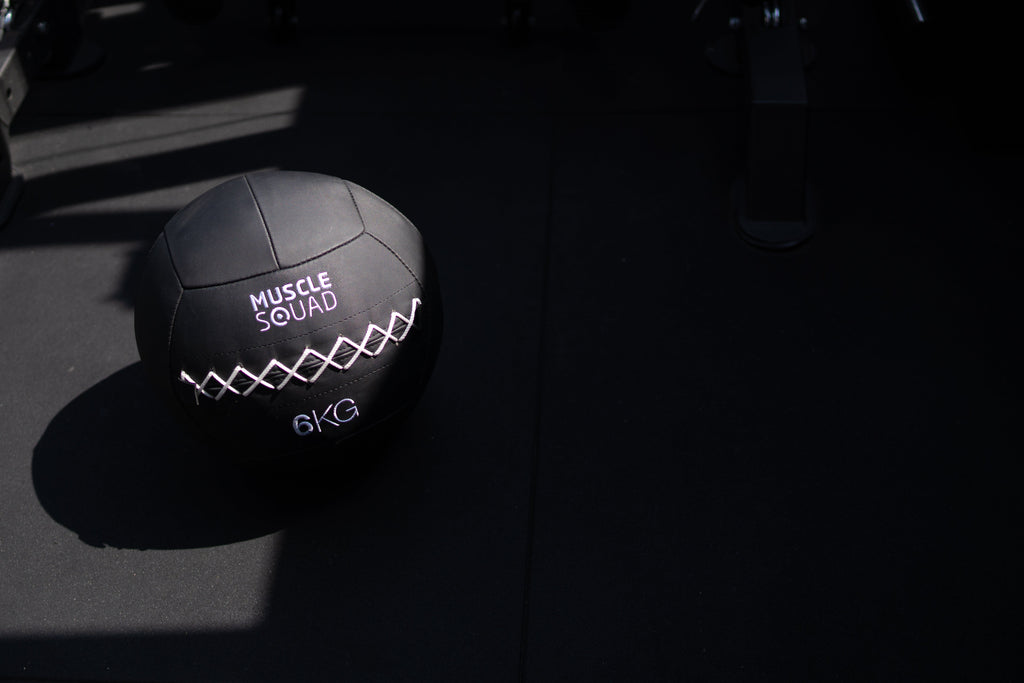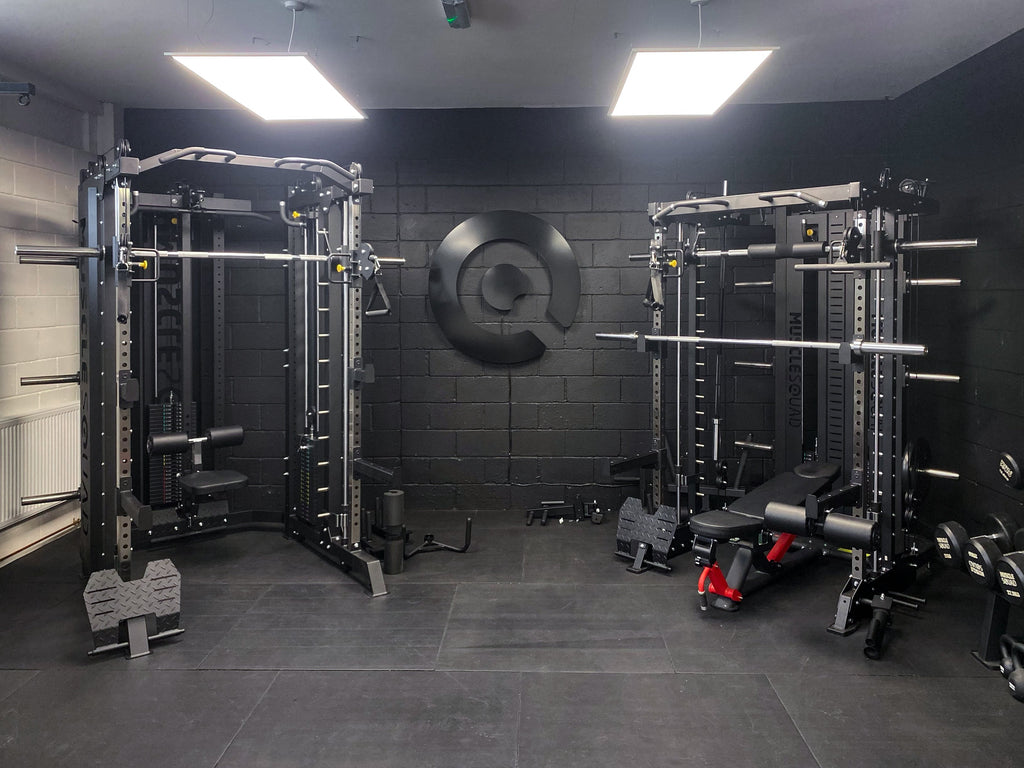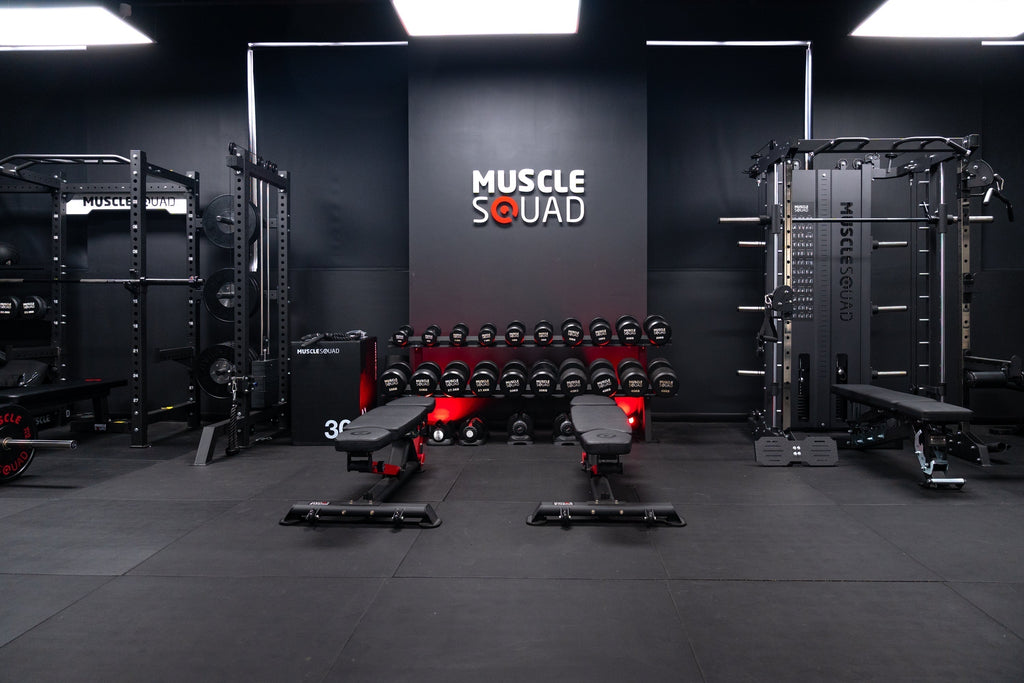Thinking of setting up your gym and making a cable rack your centrepiece? We’ve rounded up some of the most common questions we get — from cable ratios to the pulley wheels — and our fitness experts have answered them for you!
Why does the cable ratio matter?
The cable ratio affects how heavy the weight feels when you’re using the pulley system.
For example, if you’re using a 90kg weight stack on a 2:1 ratio, it’ll feel like 45kg of resistance. A 1:1 ratio means the weight feels exactly as marked — 90kg feels like 90kg.
A 1:1 ratio is better for maximum strength lifts and getting the most out of your weight stack, whereas the 2:1 ratio gives you a longer cable travel and smoother motion for isolation exercises.
What is a landmine?
A landmine is a rotating sleeve that fits an Olympic barbell, usually mounted on the side of your rack.
This accessory is great for movements like:
- Landmine rows (great for upper body)
- Landmine shoulder press
- Core rotations
It’s a small but powerful add-on that allows for a lot of versatility to your training.
Aluminium or plastic pulley wheels?
Aluminium pulley wheels are the premium choice. They’re smoother, more durable and provide better cable control — especially when performing slow, controlled reps.
Plastic pulleys still get the job done and are the cheaper alternative — but you can’t beat the commercially-graded aluminium wheels.
Do I need to bolt my rack to the floor?
Most of our squat racks are freestanding and heavy enough to handle compound lifts and pull-ups without needing to be bolted down.
However, if you still wish to bolt the rack down for that extra security, most of our racks allow for this.
How do increment plates work?
Increment plates clip onto your weight stack to allow for smaller jumps in weight. Instead of jumping from 5kg to 10kg, you can progress in smaller 2.5kg steps.
This is perfect for accessory movements or for squeezing out more gradual gains when working with isolation exercises.
How can I lift heavier with a pulley converter?
The Phase 4 rack comes with a 1:1 high cable pulley. Add the pulley converter, and you can choose any point along the uprights — giving you better positioning and movement options while maintaining that true-to-weight resistance.
Ideal for heavy cable rows and more.
How long does assembly take?
Assembly time depends on the rack, but we list the estimated time on each product page.
Most racks can be assembled in a few hours, especially with two people. If you’d prefer not to DIY, we also offer a third-party installation service so you can get set up stress-free.
Can I do pull-ups on every rack?
Yes, almost every rack comes with a pull-up bar as standard. Just make sure to check the height of the rack against your ceiling so you can perform a pull-up comfortably.
Can I add attachments later?
Yes! Many of our racks are modular — so you can add dip bars, jammer arms, lat pulldown seats and more as your training evolves.
Plate or pin loaded?
Plate-loaded cable racks require you to manually load weight plates onto the stack, while the pin-loaded ones use a fixed weight stack and a selector pin to adjust the resistance.
The choice comes down to preference and budget — plate-loaded racks are typically the more affordable option.
Need help choosing your rack?
Choosing the right rack for you is a big decision — and our team is here to help. Whether it’s for a garage gym or full gym setup, we’ll make sure you get exactly what you need.
📲 Chat with us or check out the full MuscleSquad range to get started.
Let’s start training together. 💪

 Jun 12, 2025 - Luke Whitburn
Jun 12, 2025 - Luke Whitburn


Leave a comment: